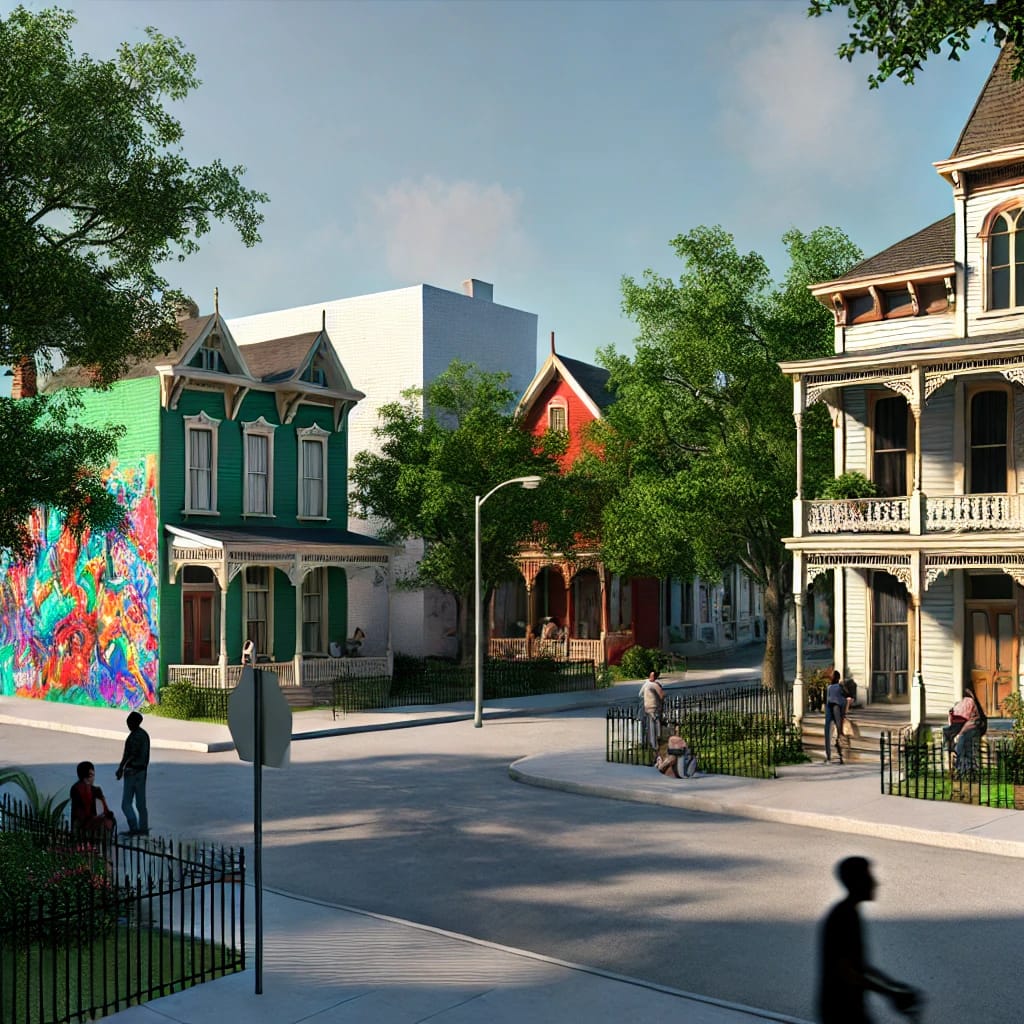Founding Roots: Houston’s First Settlements
Houston’s story began in 1836 when brothers Augustus and John Allen founded the city along the Buffalo Bayou. Early settlements were shaped by Houston’s strategic location as a hub for trade and transportation. The original neighborhoods, including what is now Downtown Houston, served as the foundation of the city’s growth, attracting settlers, businesses, and cultural institutions.

During the 19th century, many immigrants – particularly Germans, Irish, and Mexican-Americans – moved into the city’s early districts. The area’s layout centered around Main Street, which became the lifeline of early commerce. While much of the original architecture has evolved, remnants of this early period can still be found in historic structures like the Rice Hotel and Christ Church Cathedral. These early neighborhoods laid the groundwork for Houston’s transformation from a small settlement into a thriving metropolis.


The Heights: Houston’s First Master-Planned Community
Founded in 1891, The Heights is one of Houston’s oldest and most well-preserved neighborhoods. Initially developed as a streetcar suburb, The Heights provided middle-class families an escape from the congestion of downtown while remaining close enough to the city center. Today, it retains much of its original charm, with Victorian-style homes, tree-lined streets, and an eclectic mix of local shops and cafes.

The Heights has become a destination for both residents and visitors, known for its historic architecture and vibrant arts scene. Antique shops, craft stores, and local art galleries line the neighborhood’s main streets, blending old-world charm with modern flair. Annual events, like the White Linen Night, celebrate the artistic spirit of the area while preserving its historical identity. This neighborhood remains a testament to Houston’s evolution, balancing heritage with growth.

East End: A Cultural Melting Pot with Deep Roots
Another key part of Houston’s history is the East End, a diverse and historically significant neighborhood. The East End began as an industrial district with strong ties to the railroad and shipping industries, and it quickly became home to many immigrant communities. Mexican-American culture plays a central role in shaping the area’s identity, with landmarks like the Our Lady of Guadalupe Church standing as a reminder of the community’s rich heritage.

Today, the East End is known for its cultural diversity and lively street art scene. Murals throughout the neighborhood tell stories of struggle, pride, and cultural identity. The area is also home to the Historic Navigation Esplanade, where markets and festivals highlight the flavors and traditions of the local community. The East End embodies the idea that Houston’s past is always connected to its future, continuously evolving while holding on to its roots.
Third Ward: The Heart of African-American Culture
The Third Ward is another historic neighborhood that has played a vital role in Houston’s development. Known as the center of African-American culture in the city, the Third Ward has been a hub for art, activism, and education. It is home to Texas Southern University (TSU) and numerous community-based organizations that have contributed to the cultural and political identity of the area.

The neighborhood boasts a rich artistic legacy, with spaces like Project Row Houses blending community activism with art. Founded in 1993, Project Row Houses transformed a block of historic shotgun houses into a unique arts and cultural venue. This initiative reflects the spirit of the Third Ward – combining history, creativity, and community action to inspire positive change.

Preserving the Past: Historic Districts and Modern Revitalization
In recent years, efforts to preserve Houston’s oldest neighborhoods have gained momentum. Many areas, including The Heights and parts of Downtown, have been designated as historic districts, protecting their architecture and ensuring that future development honors the past. These efforts have sparked a wave of revitalization, attracting new businesses, restaurants, and residents to historic areas.
While redevelopment projects have modernized parts of these neighborhoods, the community remains committed to maintaining their unique character. Events like tours of historic homes and neighborhood festivals celebrate Houston’s history while building a sense of connection between past and present. These initiatives not only preserve the city’s heritage but also create vibrant spaces where history and innovation coexist.
Houston’s Old Town: Where History Meets the Future
Houston’s oldest neighborhoods offer more than just a glimpse into the past – they represent the spirit of a city that embraces change while honoring its heritage. From the Victorian homes in The Heights to the cultural vibrancy of the East End and Third Ward, these neighborhoods tell the story of Houston’s diverse history.
Exploring these areas reveals a city deeply connected to its roots yet always looking forward. Whether you’re wandering through antique shops, admiring murals, or attending a local festival, Houston’s historic neighborhoods invite you to experience the city’s past firsthand. These neighborhoods stand as a testament to Houston’s growth, diversity, and resilience – making them an essential part of the city’s identity today and in the future.